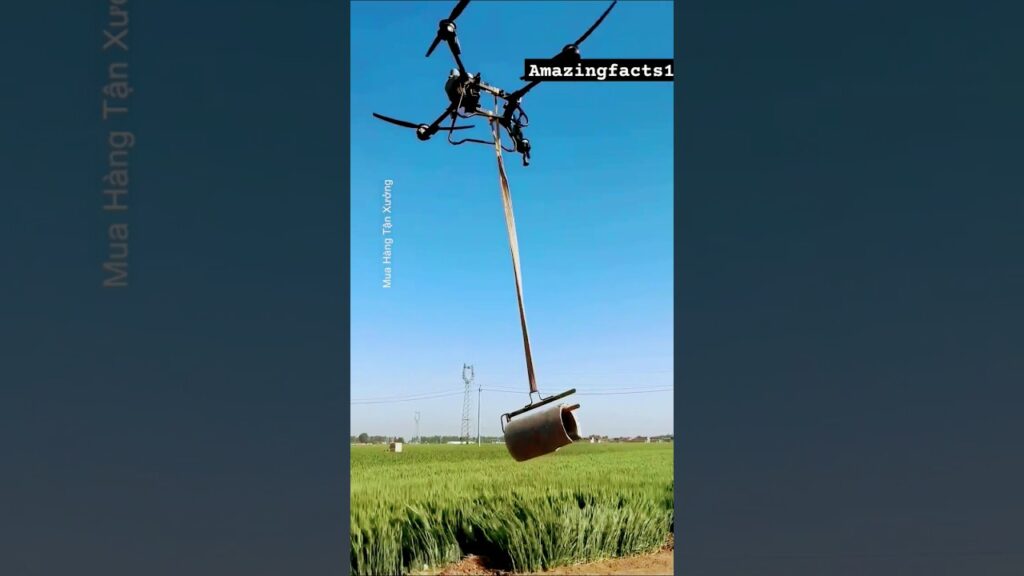Drone-Powered Construction: Revolutionizing Material Transport 🏗️ – Insights from the Field
The construction industry, a sector known for its physicality and logistical complexities, is undergoing a fascinating transformation. As a seasoned drone pilot and instructor, I’ve witnessed firsthand the burgeoning potential of unmanned aerial vehicles (UAVs) extending beyond simple aerial photography and inspections. The promise of drones for material transport, once a futuristic concept, is rapidly becoming a tangible reality, particularly in scenarios where traditional methods falter. The following insights, gleaned from recent YouTube videos, highlight this evolution, offering a glimpse into the practical applications and emerging capabilities of "Drones for Material Transport in Construction." Let’s explore how these aerial workhorses are changing the landscape.
Key Takeaways from the Sky: Material Transport with Drones
These videos provide compelling evidence of drones’ increasing role in construction logistics. Here’s what stands out:
-
Heavy Lifting is No Longer Grounded: The video from China showcasing a heavy-lifting drone underscores a significant leap in UAV capabilities. The ability to transport payloads of up to 300kg (approximately 660 lbs), as highlighted in the South China Morning Post report, opens up possibilities for delivering substantial construction materials, like components for electric power infrastructure, even at significant altitudes (3,000m or 9,842ft). Imagine the logistical hurdles this technology can overcome in remote or mountainous regions. The low ambient temperature at these altitudes also presents unique operational considerations that seasoned pilots understand intimately.
-
Accessing the Inaccessible: Several videos ("Use drones to lift and transport building materials to the mountain!", "On remote construction sites, drones lift and transport materials to specific locations," and "Drones are very efficient in transporting materials up the mountain") consistently demonstrate the value proposition of drones in navigating challenging terrain. The visuals, though brief in some cases, vividly illustrate drones carrying materials up steep inclines, eliminating the need for arduous manual labor or complex and expensive crane setups in such locations. From a pilot’s perspective, these operations demand meticulous flight planning, considering wind conditions and potential obstacles that are amplified in mountainous environments.
-
Efficiency in Action: The succinct description in the video "On remote construction sites, drones lift and transport materials to specific locations" perfectly captures the core benefit: streamlining logistics. By delivering materials directly to the point of need, drones minimize the back-and-forth of traditional transport, saving time and labor costs. As instructors, we emphasize pre-flight checks and efficient route planning to maximize these very benefits, ensuring each flight contributes optimally to the project timeline.
-
Beyond Just Concrete: The video focusing on solar panel transport ("Drones are being used to transport solar panels in China. That’s right! Not just solar panels; dron") broadens the scope of materials suitable for drone delivery. Solar panels, while relatively lightweight individually, require careful handling. This application highlights the potential for drones to transport delicate or prefabricated components with precision. This requires skilled pilots adept at managing payloads and ensuring smooth, controlled descents.
-
Global Adoption and Innovation Hubs: The recurring theme of Chinese advancements in drone technology for construction suggests a concentration of innovation and practical application in this region. Observing these developments is crucial for understanding the future trajectory of drone-powered construction globally. From a regulatory standpoint, understanding the framework allowing such operations in China provides valuable comparative insights.
Emerging Horizons: Precision and Scalability
While these videos offer snapshots of current capabilities, they hint at exciting future developments. We can anticipate advancements in:
- Increased Payload Capacity and Flight Endurance: The push for heavier lifting capacity and longer flight times will unlock even more possibilities for transporting a wider range of materials and serving larger construction sites. Battery technology and drone design are key areas to watch.
- Autonomous Operation and Swarm Technology: Imagine a fleet of drones autonomously delivering materials across a site, coordinated by sophisticated software. This level of automation promises to further enhance efficiency and reduce reliance on manual piloting for routine tasks. Safety protocols and fail-safes will be paramount in such operations, a core tenet of our training.
- Integration with Building Information Modeling (BIM): Direct data links between BIM models and drone flight planning software could enable highly precise delivery of materials to specific locations on a construction site, optimizing workflow and minimizing material waste. This level of integration requires a deep understanding of both drone operation and construction processes.
The Ascent of Drone Delivery: Watch the Revolution Take Flight
The evidence is clear: drones are not just a novelty in construction; they are evolving into indispensable tools for material transport. From navigating treacherous terrain to delivering essential components with precision, the capabilities demonstrated in these videos offer a compelling glimpse into the future of building. Scroll down to see the video highlights and witness firsthand the exciting developments in drone-powered construction. As pilots and instructors, we’re at the forefront of this revolution, ensuring safety and efficiency remain paramount as we navigate this exciting new airspace.






